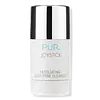What's inside
What's inside
 Key Ingredients
Key Ingredients

 Benefits
Benefits

 Concerns
Concerns

 Ingredients Side-by-side
Ingredients Side-by-side

Water
Skin ConditioningButylene Glycol
HumectantSodium Stearate
CleansingBis-PEG-18 Methyl Ether Dimethyl Silane
EmollientGlycerin
HumectantLavandula Angustifolia Flower Water
Skin ConditioningDiatomaceous Earth
AbrasiveSodium Lauroyl Methyl Isethionate
CleansingCocamidopropyl Betaine
CleansingQuaternium-90 Sepiolite
Emulsion StabilisingMica
Cosmetic ColorantSodium Methyl Oleoyl Taurate
CleansingPhenoxyethanol
PreservativeCharcoal Powder
AbrasiveMoroccan Lava Clay
AbrasiveSimmondsia Chinensis Seed Extract
AbrasiveSodium Cocoyl Isethionate
CleansingQuaternium-90 Montmorillonite
EmulsifyingChlorphenesin
AntimicrobialSynthetic Fluorphlogopite
Tin Oxide
AbrasiveTitanium Dioxide
Cosmetic ColorantCI 77491
Cosmetic ColorantWater, Butylene Glycol, Sodium Stearate, Bis-PEG-18 Methyl Ether Dimethyl Silane, Glycerin, Lavandula Angustifolia Flower Water, Diatomaceous Earth, Sodium Lauroyl Methyl Isethionate, Cocamidopropyl Betaine, Quaternium-90 Sepiolite, Mica, Sodium Methyl Oleoyl Taurate, Phenoxyethanol, Charcoal Powder, Moroccan Lava Clay, Simmondsia Chinensis Seed Extract, Sodium Cocoyl Isethionate, Quaternium-90 Montmorillonite, Chlorphenesin, Synthetic Fluorphlogopite, Tin Oxide, Titanium Dioxide, CI 77491
Water
Skin ConditioningPropanediol
SolventGlycerin
HumectantKaolin
AbrasiveSodium Stearate
CleansingOleth-20
CleansingHamamelis Virginiana Water
AstringentLactobacillus Ferment
Skin ConditioningLactococcus Ferment Lysate
Skin ConditioningVinegar
Salix Alba Bark Extract
AstringentCurcuma Longa Root Extract
MaskingPolymnia Sonchifolia Root Juice
Skin ConditioningInulin
Skin ConditioningLactic Acid
BufferingBacillus Ferment
Skin ConditioningLactobacillus
Skin ConditioningHydroxyacetophenone
AntioxidantAlpha-Glucan Oligosaccharide
CleansingBeta Vulgaris Root Extract
Skin ConditioningSodium Chloride
MaskingSilica
AbrasiveSodium Hydroxide
BufferingGellan Gum
Citric Acid
BufferingSodium Citrate
BufferingXanthan Gum
EmulsifyingMaltodextrin
AbsorbentButylene Glycol
HumectantBenzoic Acid
Masking1,2-Hexanediol
Skin ConditioningEthylhexylglycerin
Skin ConditioningSodium Benzoate
MaskingTocopherol
AntioxidantPhenoxyethanol
PreservativeParfum
MaskingCI 77499
Cosmetic ColorantCI 77492
Cosmetic ColorantCI 77891
Cosmetic ColorantWater, Propanediol, Glycerin, Kaolin, Sodium Stearate, Oleth-20, Hamamelis Virginiana Water, Lactobacillus Ferment, Lactococcus Ferment Lysate, Vinegar, Salix Alba Bark Extract, Curcuma Longa Root Extract, Polymnia Sonchifolia Root Juice, Inulin, Lactic Acid, Bacillus Ferment, Lactobacillus, Hydroxyacetophenone, Alpha-Glucan Oligosaccharide, Beta Vulgaris Root Extract, Sodium Chloride, Silica, Sodium Hydroxide, Gellan Gum, Citric Acid, Sodium Citrate, Xanthan Gum, Maltodextrin, Butylene Glycol, Benzoic Acid, 1,2-Hexanediol, Ethylhexylglycerin, Sodium Benzoate, Tocopherol, Phenoxyethanol, Parfum, CI 77499, CI 77492, CI 77891
Ingredients Explained
These ingredients are found in both products.
Ingredients higher up in an ingredient list are typically present in a larger amount.
Butylene Glycol (or BG) is used within cosmetic products for a few different reasons:
Overall, Butylene Glycol is a safe and well-rounded ingredient that works well with other ingredients.
Though this ingredient works well with most skin types, some people with sensitive skin may experience a reaction such as allergic rashes, closed comedones, or itchiness.
Learn more about Butylene GlycolGlycerin is already naturally found in your skin. It helps moisturize and protect your skin.
A study from 2016 found glycerin to be more effective as a humectant than AHAs and hyaluronic acid.
As a humectant, it helps the skin stay hydrated by pulling moisture to your skin. The low molecular weight of glycerin allows it to pull moisture into the deeper layers of your skin.
Hydrated skin improves your skin barrier; Your skin barrier helps protect against irritants and bacteria.
Glycerin has also been found to have antimicrobial and antiviral properties. Due to these properties, glycerin is often used in wound and burn treatments.
In cosmetics, glycerin is usually derived from plants such as soybean or palm. However, it can also be sourced from animals, such as tallow or animal fat.
This ingredient is organic, colorless, odorless, and non-toxic.
Glycerin is the name for this ingredient in American English. British English uses Glycerol/Glycerine.
Learn more about GlycerinPhenoxyethanol is a preservative that has germicide, antimicrobial, and aromatic properties. Studies show that phenoxyethanol can prevent microbial growth. By itself, it has a scent that is similar to that of a rose.
It's often used in formulations along with Caprylyl Glycol to preserve the shelf life of products.
Sodium stearate is the sodium salt of stearic acid.
The structure of sodium stearate makes it both a cleanser and emulsifier. As a cleanser, it helps dissolve dirt, oil, and other pollutants. As an emulsifier, it helps prevent ingredients from separating. This adds stability to the formula.
Water. It's the most common cosmetic ingredient of all. You'll usually see it at the top of ingredient lists, meaning that it makes up the largest part of the product.
So why is it so popular? Water most often acts as a solvent - this means that it helps dissolve other ingredients into the formulation.
You'll also recognize water as that liquid we all need to stay alive. If you see this, drink a glass of water. Stay hydrated!
Learn more about Water